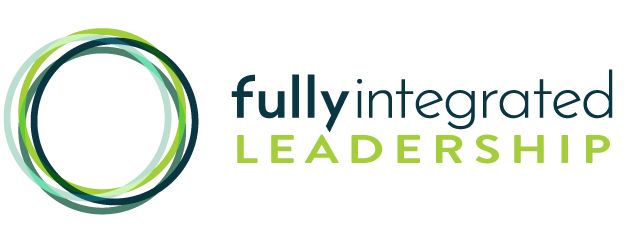Challenge
Leaders today face unprecedented challenges
Leaders are dealing with a world where change is ever greater, where the future is less predictable, where the options increase exponentially, and the way we think about these options has undoubtedly changed. Today, leaders must make decisions faster, processing huge amounts of information, all while operating in an environment where everything is more interconnected than ever before.
This “new normal” for leaders is best summarized by the term VUCA that was originally coined by the US military when they realized their traditional tactics were ineffective in the face of global terror cells. This term has now taken hold in the business sector because it so accurately reflects the reality leaders face on a daily basis.
The Conditions of our vuca world
Pointing to the nature, speed, volume, and magnitude of change that is not in a predictable pattern. Volatility is turbulence, a phenomenon that is occurring more frequently than in the past.
The lack of predictability in issues and events. These volatile times make it difficult for leaders to use past issues and events as predictors of future outcomes, making forecasting extremely difficult and decision-making challenging.
There are often numerous and difficult-to-understand causes and mitigating factors (both inside and outside the organization) involved in a problem. This layer of complexity, added to the turbulence of change and the absence of past predictors, adds to the difficulty of decision making.
The lack of clarity about the meaning of an event, or the causes and the ‘who, what, where, how, and why’ behind the things that are happening. Not only are the causes unclear, they are hard to ascertain.
Our Minds are not well suited to operate in a VUCA environment
The human brain is a device that was designed, assembled, tested, and mostly completed hundreds of thousands of years ago in a vastly different environment with vastly different requirements. Because of its evolutionary origins, the world your brain deals with is murky, ancient, and terrifying. So are its strategies.
The mismatch between how our brains are designed to operate and the way the VUCA world needs them to operate is staggering. Consider the following comparisons:
 |
 |
|
| Conventional Thinking | Fully Integrated Thinking | |
| Use the past to predict the future | Understand the pace of change makes every situation different | |
| Anything uncertain is potentially threatening and must be approached with caution | Uncertainty is normal and must be approached with curiosity and inquiry | |
| Focus is on quick fixes to solve problems efficiently | Focus is on “managing adaptive dilemmas” and being comfortable with long-term strategies | |
| When there’s a problem, others are to blame | When there’s a problem, ask first how I may be contributing to perpetuating it | |
| “What I see is all there is” | “What I see is being filtered by my brain and represents a small part of what is” | |
| “I must be in control” | “I understand that control is a myth and actually causes more harm than good” | |
| Do as much as you can as quickly as you can | Focus on a few key coordinated strategies for maximum impact | |
| Look for patterns to connect causes and effects | Question the accuracy of “pattern recognition” and inquire into multiple causal relationships | |
| Using our head is the only way to make decisions | The interaction of mind, body, and intuition is most effective for decision-making | |
| Learning/growth are a luxury and I don’t have time for it | Learning/growth is critical for my development and I give adequate time/energy to it |
NEUROPLASTICITY
The mind can be retrainedAdvances in neuroscience now prove that rigorous training and practice can create new connections in the brain that change how we think, feel, and act. This phenomenon, known as neuroplasticity, is the root of the Fully Integrated Approach.
INTEGRATED APPROACH
We train ourselves to lead in a VUCA worldThe skills we teach are from the top complex change leaders. The Fully Integrated Approach is based on years of studying the habits, practices, and leadership theories of the top leaders from around the world. Hundreds of hours of interviewing leaders, reading books, attending workshops, gaining certifications, and implementing all of this into my own life is delivered in the FILA.
The following are some of the skills you will learn using our approach
- Systems Thinking-learning the skill of solving complex problems
- Collaborative Decision-Making
- Self-Awareness/Self-Reflection
- Managing “Polarities”
- Action-Inquiry
- Influencing Others
- System Dynamics in Organizations
- Strategy Execution at individual, team, and organizational levels
- Skills for overcoming cognitive/behavioral biases
- Making use of feedback
HIGH PERFORMANCE TRAINING
It takes a disciplined training processWe know how to train for high performance. My background as an Ironman triathlete, and my experience training triathletes as a certified USA Triathlon coach, helps me guide leaders to approach learning/development as a disciplined training process.
MEASURE PROGRESS
Quantifiable learning and growthLearning and growth must be quantifiable. Our leadership assessments provide quantifiable data on your level of skill in key areas needed to lead in a VUCA world, and give us a roadmap for your specific learning and growth to develop into a Fully Integrated leader. We leverage an exceptional resource called Lectical assessments.
THINK DIFFERENTLY
The future of leadershipOur coaching approach is different from most coaching programs. We have studied the coaching industry and found that the majority of coaches use a “Behavioral” approach. We do not believe this leads to lasting change or increased leadership impact. Here is a comparison of “Behavioral” vs. Fully Integrated coaching.
 |
 |
|
| Behavioral Approach | Fully Integrated Approach | |
| Teaches the leader to do more of/less of what they already know how to do | Teaches mastery of new skills needed to lead well in VUCA conditions | |
| View leaders as separate parts (cognitive, emotional, intuitive); get stuck looking at leaders primarily through one of these parts. | View leaders as the integration of multiple parts that interact together; work is on improving the relationship between the parts | |
| View change as an outside-in process: address the behaviors to create lasting change | View change as an inside-out process: address mindset and beliefs to create lasting change | |
| One size fits all coaching: have a framework they apply to all leaders | Fully customized coaching: each leader operates in a unique context that must be considered | |
| Approach learning as the accumulation of new information | Approach to learning is accumulating information, applying it in real situations, and reflecting on outcomes |
BE THE BEST YOU
An integrated approach to lifeThe results show up in your leadership and beyond. Learning new skills to navigate VUCA conditions will make you a powerful leader, but the benefits go well beyond work. Our leaders report stronger relationships with their colleagues, families, and friends. They are happier, more energetic, and bring a sense of positivity and presence to all of their relationships.
